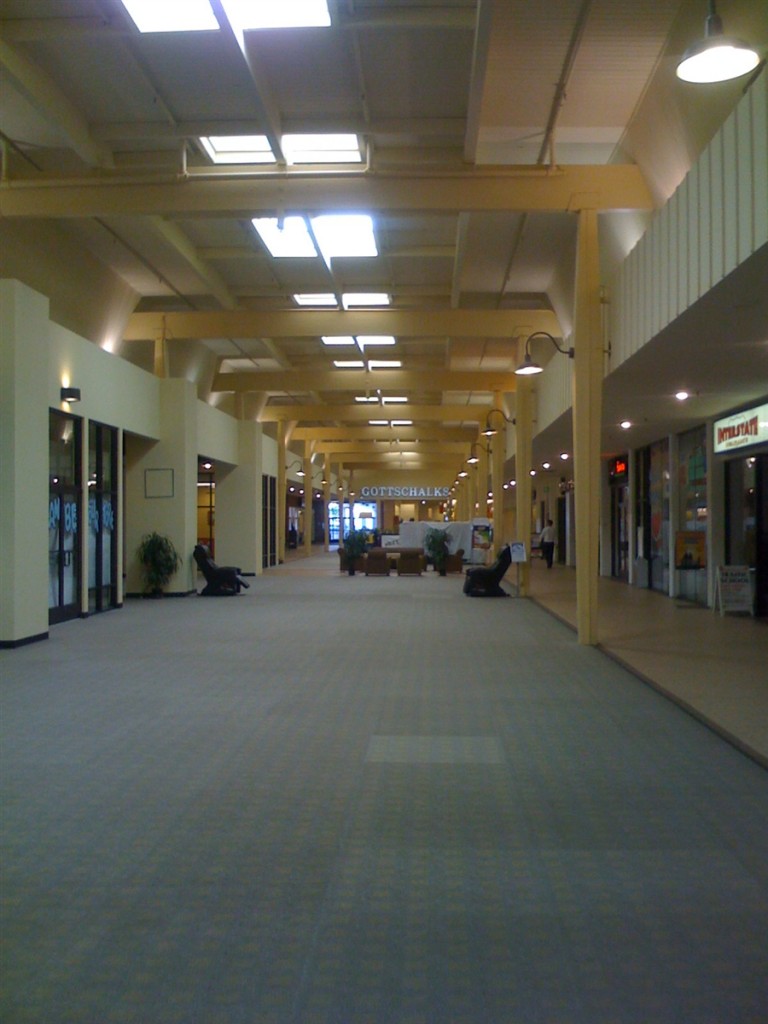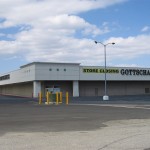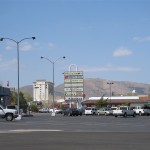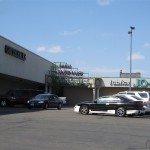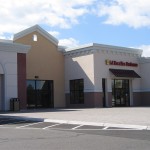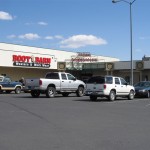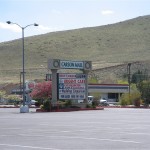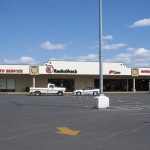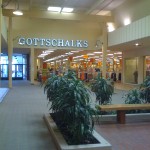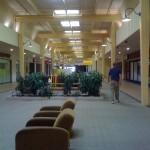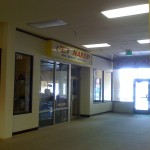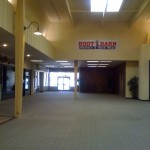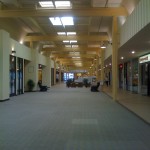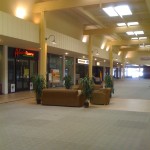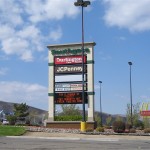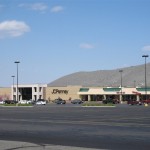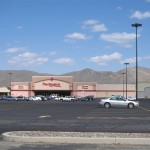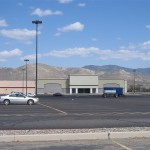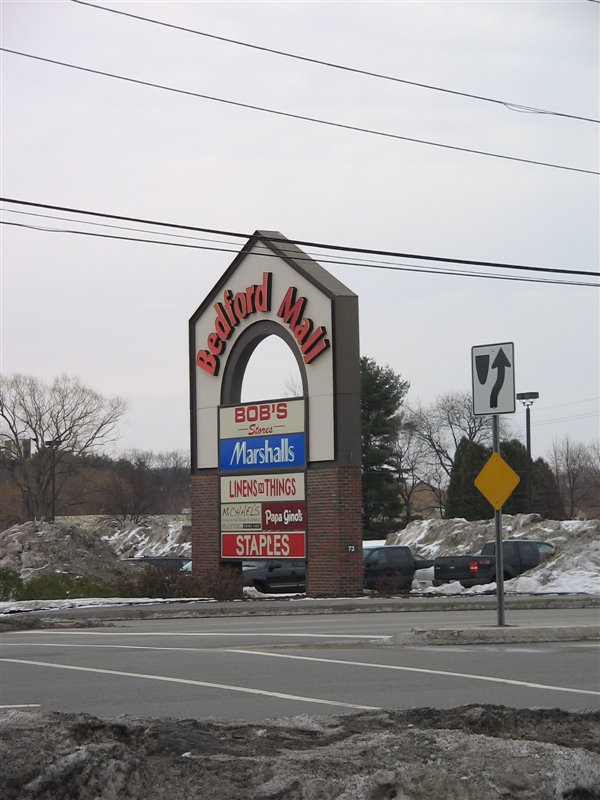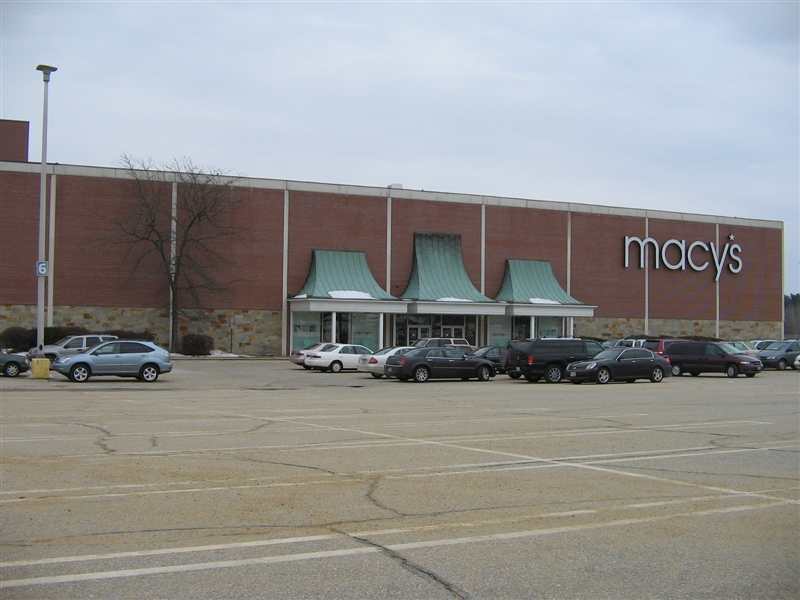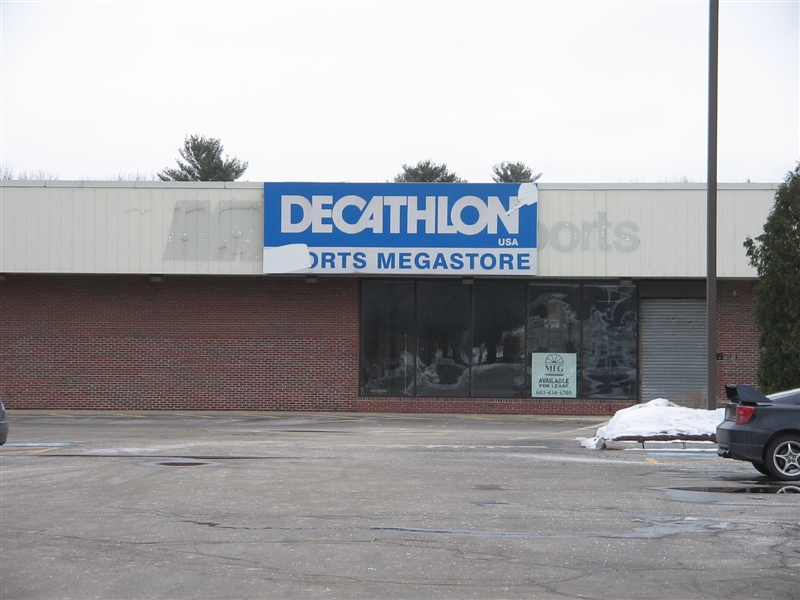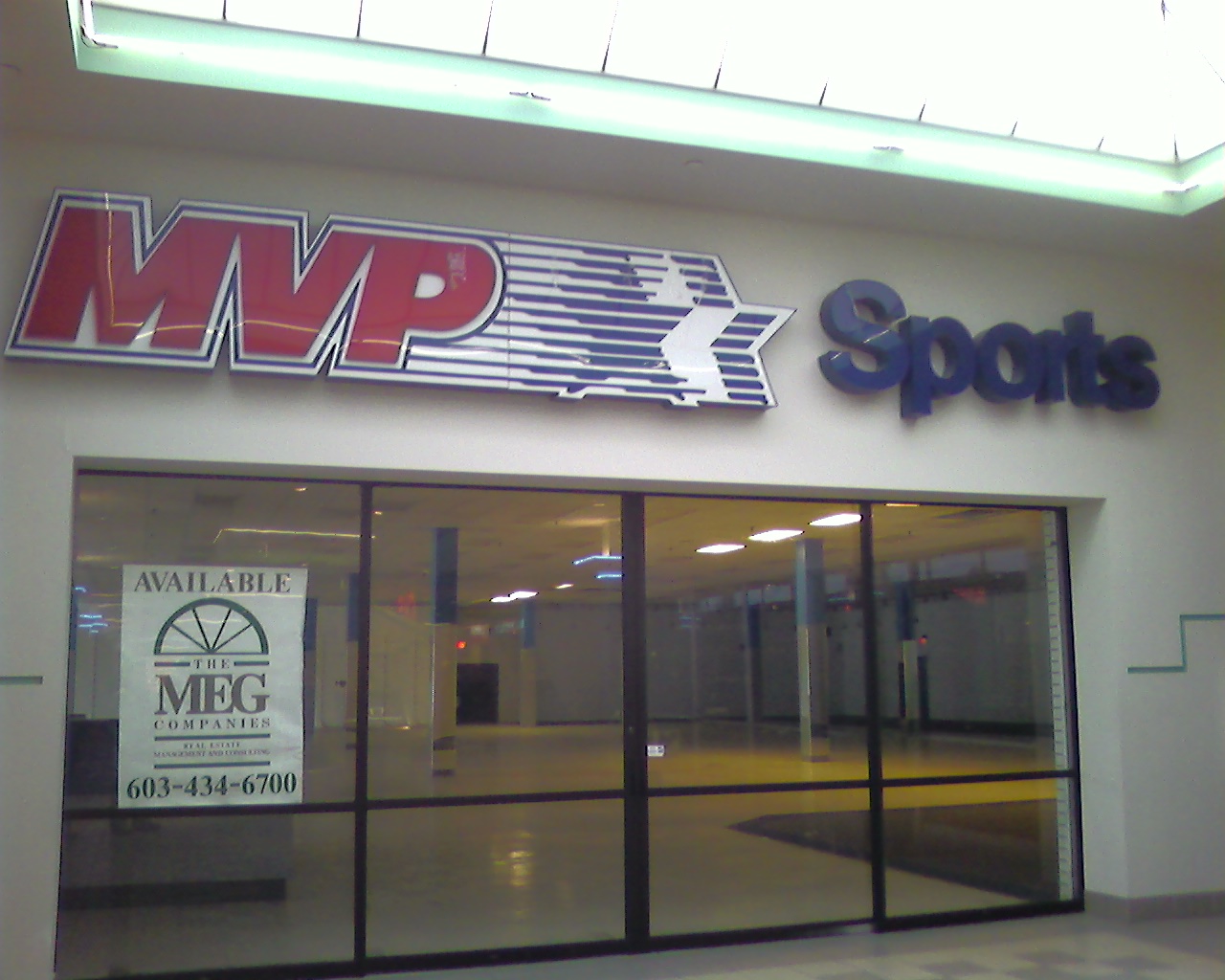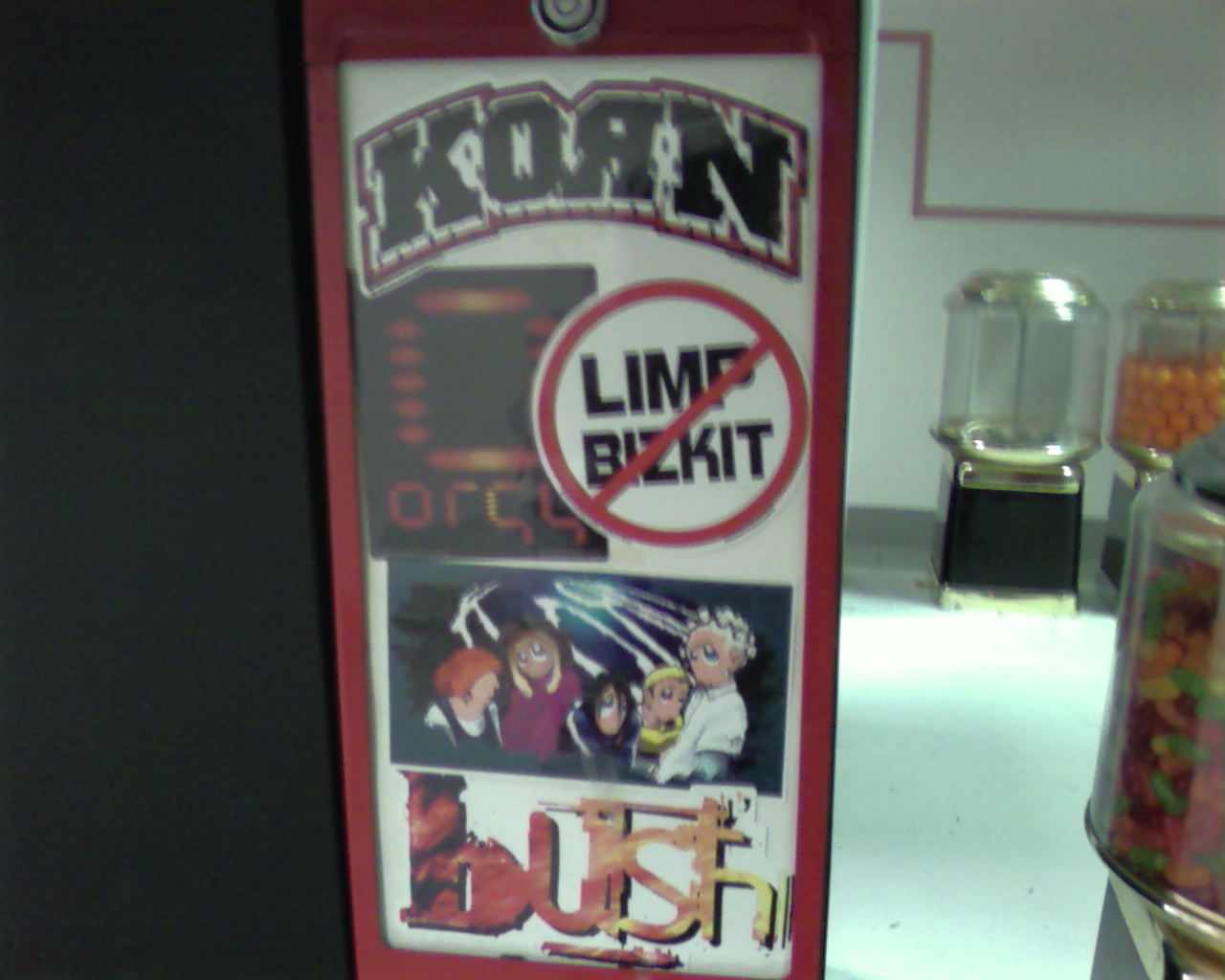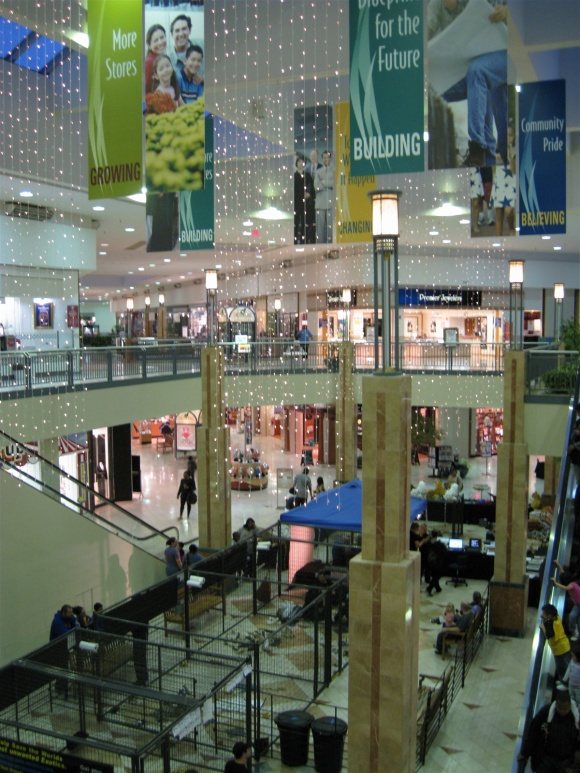
Recently I’ve been following coverage of some pretty extensive renovations taking place at Lincoln Mall, a long-beleagured super-regional mall in south suburban Chicagoland. Initially I was excited at the prospect of even a modicum of success here, especially considering I’ve never seen the mall even close to its potential. I first visited Lincoln Mall about a decade ago, after it fell in the toilet but before it drowned. I recently re-visited for the first time after some of the renovations have materialized, and was extremely dismayed – both by the progress of the renovations and also by a personal, not-so-fun experience I had there.
Matteson, Illinois (pronounced matt-uh-son) is a diverse suburb of Chicago, located about 30 miles south of downtown. With a population of about 17,000, Matteson is economically middle class, squeezed in between poverty-stricken Chicago Heights to the east, and wealthy Frankfort to its west.
 Within Chicagoland, Matteson is part of – and centrally located within – a larger economic region known as “Chicago’s Southland” – a regional economic development and tourism consortium comprised of nearly all of the suburbs south and southwest of Chicago. Made up of 86 communities with a population of nearly 2.5 million people, the region is simultaneously diverse yet allied by common goals. Much of the region, specifically the suburbs directly south of the City of Chicago and east of I-57, has been negatively impacted by the loss of heavy industry during the latter part of the 20th century. In an attempt to promote the region’s shift from a manufacturing to a service based economy, the consortium advertises the region’s proximity to Chicago, the transportation network – numerous rail lines as well as 5 interstates converge here – and the region’s affordability in comparison to the western and northern suburbs.
Within Chicagoland, Matteson is part of – and centrally located within – a larger economic region known as “Chicago’s Southland” – a regional economic development and tourism consortium comprised of nearly all of the suburbs south and southwest of Chicago. Made up of 86 communities with a population of nearly 2.5 million people, the region is simultaneously diverse yet allied by common goals. Much of the region, specifically the suburbs directly south of the City of Chicago and east of I-57, has been negatively impacted by the loss of heavy industry during the latter part of the 20th century. In an attempt to promote the region’s shift from a manufacturing to a service based economy, the consortium advertises the region’s proximity to Chicago, the transportation network – numerous rail lines as well as 5 interstates converge here – and the region’s affordability in comparison to the western and northern suburbs.
Suburban blight, crime, and poverty have become significant problems in the Southland region, with some good examples in postwar suburbs Harvey and Chicago Heights. In fact, one of the most famous dead malls in the country is located in Harvey, and – as of late 2009 – is still standing after being abandoned for almost 25 years. However, this traditionally blue collar region is by no means lacking in riches; some of the Chicago area’s wealthiest zip codes are in Frankfort, Orland Park, Palos Heights, Olympia Fields and other areas within the region.
Matteson is home to a concentration of numerous strip malls and big box stores, mostly located along Route 30 and Cicero Avenue (Route 50). It’s one of several areas in the south suburbs of Chicago with a high concentration of retail strip, and also home to one of the south/southwest suburbs’ first super-regional malls, Lincoln Mall.
Lincoln Mall opened in 1973 on the southeast corner of the intersection between Route 30 (Lincoln Highway) and Route 50 (Cicero Avenue), just east of I-57. When it opened, the mall contained nearly 1 million square-feet of retail space shared between 4 anchors – Carson Pirie Scott, Wieboldt’s, JCPenney, and Montgomery Ward – and two levels of mall space connecting the anchors. The original design of the mall was very similar to Yorktown Mall in Chicago’s western suburbs, which is still open and successful, and the former Lakehurst Mall in north-suburban Waukegan, which closed in 2001.
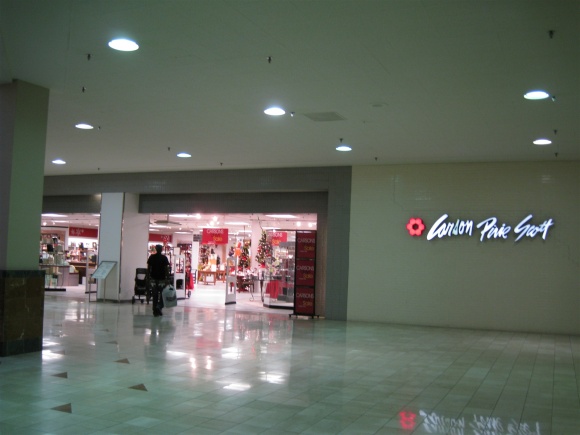 Lincoln Mall was an instant success, predating Orland Square by three years and the enclosure of River Oaks Mall by two decades. In fact, it wasn’t really until the late 1990s when things began to dramatically go south, despite the closure and 8 year vacancy of the Wieboldt’s store when that chain folded in 1987. In fact, the mall was refurbished with a major remodel and update in 1993, and Sears moved into Wieboldt’s old location from nearby Park Forest Plaza – an outdoor center that predated Lincoln Mall and died due to its competition – in 1995.
Lincoln Mall was an instant success, predating Orland Square by three years and the enclosure of River Oaks Mall by two decades. In fact, it wasn’t really until the late 1990s when things began to dramatically go south, despite the closure and 8 year vacancy of the Wieboldt’s store when that chain folded in 1987. In fact, the mall was refurbished with a major remodel and update in 1993, and Sears moved into Wieboldt’s old location from nearby Park Forest Plaza – an outdoor center that predated Lincoln Mall and died due to its competition – in 1995.
The 1990s saw the beginning of the end for Lincoln Mall. In 1993-94, nearby River Oaks Center was enclosed and up-sized. In response, Lincoln Mall remodeled and filled in the dead Wieboldt’s anchor with Sears, but in the end it wasn’t enough. The unsurpassed growth of the 90s moved the almighty dollars westward, and cities in the Orland Park and Frankfort corridor saw the most growth and the best incomes in the Southland. Thus, the retail strip surrounding and including Orland Square, along 159th Street and Route 45 got the best stores. This is still true today. Lincoln Mall’s retail portfolio began to slowly disintegrate, as middle tier and popular national chains began to leave and were replaced by local stores and vacancies. The core demographic of the mall’s clientele changed too, slowly yet surely, from racially diverse to predominantly African-American by 2000 or so, and the stores began to reflect this.
In 1999, Montgomery Ward closed up shop at Lincoln Mall, about two years before their nationwide shuttering, and in 2000 JCPenney left during a round of closings in a lousy period for that chain. These two blows left only Sears and Carson’s at the helm of a sinking ship. During the early 2000s stores began to leave in droves, and the mall was put on life support.
In 2005, a commercial realty partnership from Texas, Realty America Group, was contacted by the mall’s owner to sell the mall. The owner apparently wanted to cut their losses and get out, but Realty America said “Wait just a dog gone minute!” – I’m paraphrasing now – and decided that Lincoln Mall was more of an asset of opportunity than a dead mall that should be left for – well, dead.
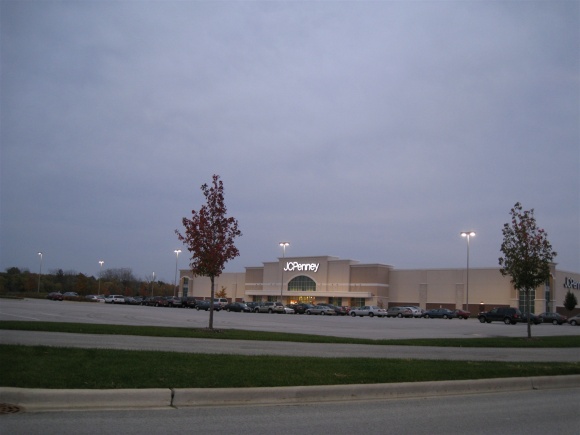 So, after completing due diligence, Realty America went to the Village of Matteson and apparently made a stellar presentation for redevelopment, because they were awarded $45 million for the project in April 2005. Groundbreaking took place in August of that year, with the construction of a new four-lane road behind the mall connecting Route 30 and Cicero. The theory behind this was that prospective new tenants wouldn’t want to be at the “back” of the mall with restrictive visibility and access. The new road essentially eliminates the idea of the “back” of the mall altogether, providing – in theory – the same level of access on all four sides of the mall.
So, after completing due diligence, Realty America went to the Village of Matteson and apparently made a stellar presentation for redevelopment, because they were awarded $45 million for the project in April 2005. Groundbreaking took place in August of that year, with the construction of a new four-lane road behind the mall connecting Route 30 and Cicero. The theory behind this was that prospective new tenants wouldn’t want to be at the “back” of the mall with restrictive visibility and access. The new road essentially eliminates the idea of the “back” of the mall altogether, providing – in theory – the same level of access on all four sides of the mall.
Renovation proceeded with some pretty grandiose plans, including the demolition of both dead anchors, complete renovation of the interior space, structural updates, outside facade updates including a new entrance, and a cherry on top. A cornerstone of the entire renovation project is the Promenade at Lincoln Mall, a non-enclosed district comprised of retail boxes, other shops, restaurants, and entertainment taking the space of the anchors that were demolished as well as along the new four-lane road. The new open-air space would comprise between 400,000 and 500,000 of new retail space, restaurants, and a planned movie theatre, bringing the total square-footage back to the original size of the enclosed mall – about 1 million square feet. The end idea, according to Lincoln Mall’s general manager, was to create a “best of both worlds” scenario, complete with an enclosed mall for people who want a climate controlled environment in the harsh climate of the upper midwest, along with an outdoor area for big box stores and other tenants who don’t want to be in the enclosed part of the concept, as well as to indulge the somewhat-nonsensical fad of outdoor shopping for outdoor shopping’s sake. Sounds great, doesn’t it?
In Summer 2007, the new road behind the mall was complete, just in time for Target to open their new 126,000 square foot store on a parcel south of the mall, south of the new road. Then, in Fall 2007, JCPenney opened a 106,000 square foot store southeast of the mall, also south of the new road. Then the project kind of stopped. Whoops.
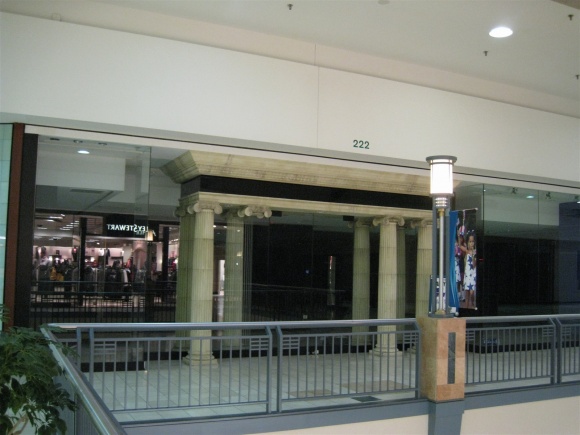 In October 2008, the village of Matteson threw another $10 million at the project, to get the next phase running – the filling in of the demolished anchor pads, the exterior/interior renovations of the remaining enclosed mall, addition of other tenants, etc. About the same time, in September 2008, the Texas partnership of Realty America, who owns the mall, apparently stopped making mortgage payments on it, according to their lender, Texans Commercial. Not so, said the manager of the partnership, Rives Castleman (what a name); instead, he claims that the lender is forcing them into default by playing dirty tricks and instead owes them $20 million; they have filed counter suit. This is all from court documents, as both Castleman and his lawyer, Eugene Geekie (another name!) have refused to comment to reporters. Texans had agreed, in 2004 – when this entire project began – to finance the initial stages of the redevelopment, in addition to the $45 million received from the village at the get go. The loan had an outstanding balance of over $37 million at the time of the foreclosure.
In October 2008, the village of Matteson threw another $10 million at the project, to get the next phase running – the filling in of the demolished anchor pads, the exterior/interior renovations of the remaining enclosed mall, addition of other tenants, etc. About the same time, in September 2008, the Texas partnership of Realty America, who owns the mall, apparently stopped making mortgage payments on it, according to their lender, Texans Commercial. Not so, said the manager of the partnership, Rives Castleman (what a name); instead, he claims that the lender is forcing them into default by playing dirty tricks and instead owes them $20 million; they have filed counter suit. This is all from court documents, as both Castleman and his lawyer, Eugene Geekie (another name!) have refused to comment to reporters. Texans had agreed, in 2004 – when this entire project began – to finance the initial stages of the redevelopment, in addition to the $45 million received from the village at the get go. The loan had an outstanding balance of over $37 million at the time of the foreclosure.
The court case began in January 2009, and has apparently screeched the renovations to a halt. As of October 2009, the enclosed mall looks like a weird retail Frankenmonster (hey, it’s Halloween) – there are gross, visible concrete seams and an unappealing mess where the dead anchors were torn off and demolished, and a temporary fence sits along the half of the mall where the demolition took place. They, at least, cleaned up (most of) the rubble, and the JCPenney and Target are operating in separate buildings south of the new road they constructed. It honestly looks like a terrible mess, and if I were a resident of Matteson I’d be really embarrassed of this eyesore.
Here’s an obvious question – why didn’t they just put Target and JCPenney in the mall? They had two vacant anchors, and one of them even WAS JCPenney, and they had 2 anchors to put into place. Seems like simple math to me. The mall would have definitely been reinvigorated by having two brand new anchors, including the ever-popular Target, so how is putting them outside and essentially across the street going to ever help the interior part of the mall that they wanted to keep? We’re really scratching our heads here. Unless it really comes together into something cohesive and pedestrian-oriented, linking Target and JCPenney and funneling people into the mall, the Promenade at Lincoln Mall is nothing innovative nor remotely beneficial to the mall structure. It’s been done before – ever see businesses on a mall’s ring road?
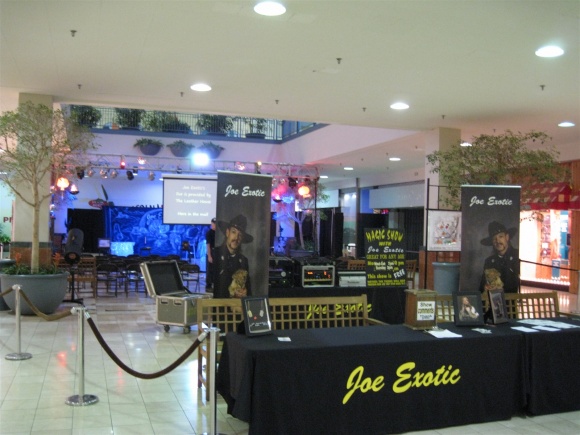 The interior portion of the mall today is kind of sad. There are some popular national retailers, like Old Navy, Bath and Body works and Express, but there are seemingly more vacancies and local stores. You know your mall is unwell when Dollar Plus is listed under the food ‘catagory’ (sp) on the directory map. Also, they converted an old Sbarro into a place that advertises a combination of Mexican and Italian food. Furthermore, the center court area has been sectioned off with cages where you can pet live tigers, and a temporary stage is set up near one of the demolished anchors where magic shows are held nightly, performed by a mullet-clad man named Joe Exotic. The show itself costs no money to the mall, and Joe even suggests on his website that his shows are great for dead or dying malls. This is a unique and possibly innovative idea, but obviously temporary and not a real solution.
The interior portion of the mall today is kind of sad. There are some popular national retailers, like Old Navy, Bath and Body works and Express, but there are seemingly more vacancies and local stores. You know your mall is unwell when Dollar Plus is listed under the food ‘catagory’ (sp) on the directory map. Also, they converted an old Sbarro into a place that advertises a combination of Mexican and Italian food. Furthermore, the center court area has been sectioned off with cages where you can pet live tigers, and a temporary stage is set up near one of the demolished anchors where magic shows are held nightly, performed by a mullet-clad man named Joe Exotic. The show itself costs no money to the mall, and Joe even suggests on his website that his shows are great for dead or dying malls. This is a unique and possibly innovative idea, but obviously temporary and not a real solution.
We visited the mall in October 2009, on a weekday night, and walked around and took pictures of the mall as usual, when we noticed we were being mysteriously followed by someone who appeared to be an employee of the mall – a janitor? He had a walkie talkie or a cell phone, but we weren’t sure; the mall wasn’t that crowded, and this person was definitely following us. It appeared to be time to leave, due to this turn of events, but as we were leaving a security guard by the name of C. Mack popped out from somewhere on the 2nd floor of the mall and approached us with fervor.
Uh oh. Here it comes, the “we caught you photographing in the mall” spiel. We’ve heard it before, and it’s never pleasant, but what actually transpired here was unexpected and sort of shocking, but ultimately kind of hilarious. He got out a little notebook – the kind real police officers use to take statements – and got out a writing utensil and kept up with our pace (we didn’t stop to indulge him), all pretty intently.
“I have reports that you were soliciting.”
“[WTF??]”
“There have been reports based on your description that you were soliciting in the mall.”
“Well, I haven’t opened my mouth or talked to a single person since I entered the mall, so no.”
“Well, the description I was given was definitely you.”
“Again, no.”
At this point, I was admittedly a little freaked out, and a few thoughts whizzed around in my head. Why was I being accused of soliciting when I honestly hadn’t spoken to anyone, at all, since I entered the mall? I had only been there maybe 10 minutes at this point. I was taking pictures, the ones featured with this post, but that’s not soliciting. Did someone not know what soliciting means?
At any rate, after I denied soliciting a few times he immediately backed off and started walking the other way. I wasn’t kicked out of the mall, and nothing else happened. I did leave immediately, as planned, and maybe this was their intent, but it’s still kind of puzzling.
I have a few questions to pose to y’all: Is this mall a case of biting off more than one can chew, resultant of the current state of the economy combine with the greed and mismanagement of non-local entities looking to make a few bucks? Or is it just a case of bad luck and some honest tries? Maybe it’s a combination of all of these factors. Or maybe we’re completely off the mark here. Leave comments and let us know!
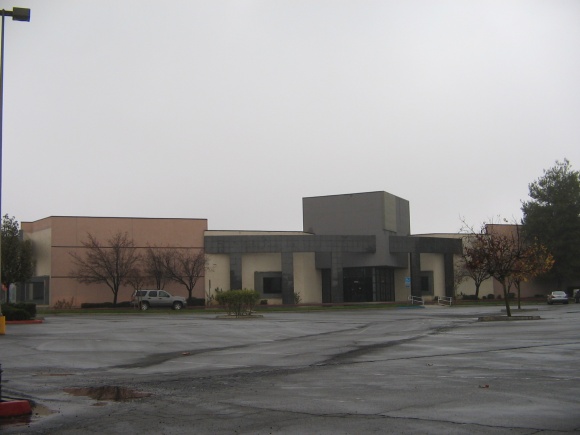 The East Hills Mall in Bakersfield, California is the smaller of the two malls serving this central valley city, and is one of California’s most troubled malls. All of the anchor stores–Harris, Gottschalks, and Mervyn’s–in the 415,000 square foot center have shut, and it serves an area of Bakersfield that is impacted heavily by both crime and the housing crisis of the late 2000s.
The East Hills Mall in Bakersfield, California is the smaller of the two malls serving this central valley city, and is one of California’s most troubled malls. All of the anchor stores–Harris, Gottschalks, and Mervyn’s–in the 415,000 square foot center have shut, and it serves an area of Bakersfield that is impacted heavily by both crime and the housing crisis of the late 2000s.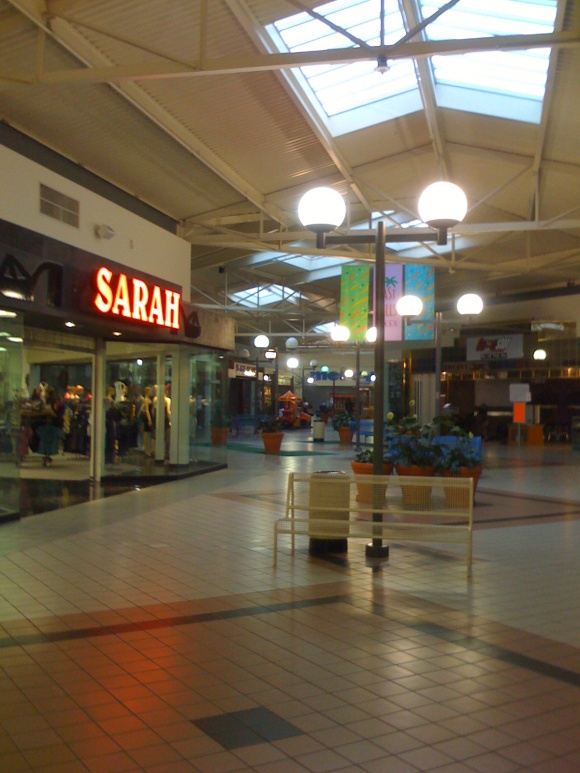
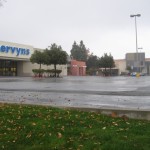
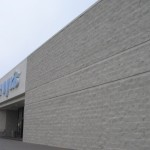
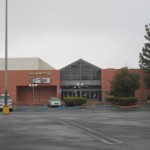
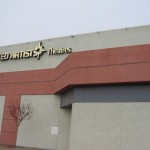
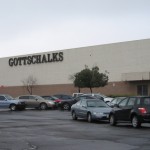
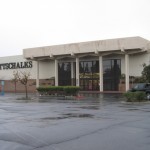
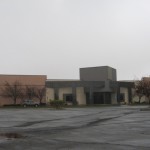
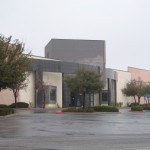
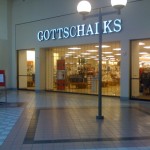
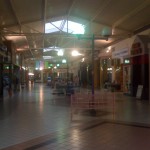
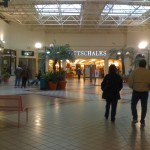
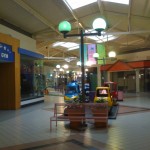
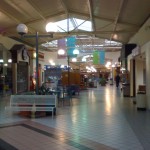
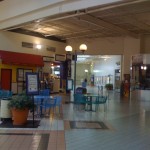
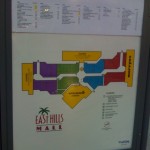
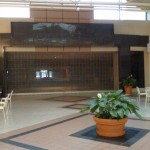
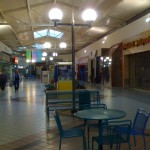
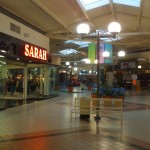
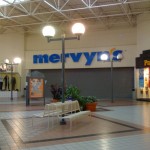
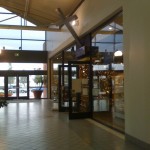
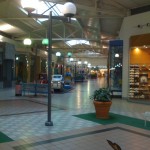
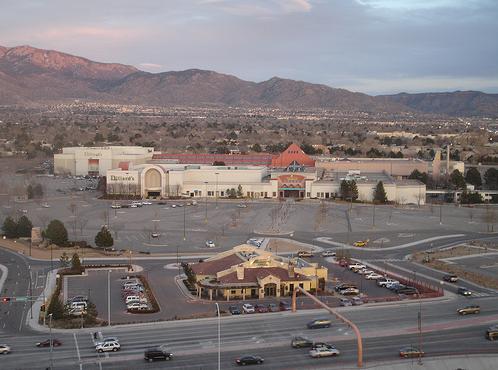 In response to its tremendous growth, Albuquerque decided to jump on the mall-building trend and began planning the state’s first mall in 1960. Due to development patterns favoring the sprawling east side, combined with the pending completion of Interstate 40 across Albuquerque around the same time, a centrally-located site was selected along Interstate 40 at Louisiana Boulevard – about 6 miles east of downtown.
In response to its tremendous growth, Albuquerque decided to jump on the mall-building trend and began planning the state’s first mall in 1960. Due to development patterns favoring the sprawling east side, combined with the pending completion of Interstate 40 across Albuquerque around the same time, a centrally-located site was selected along Interstate 40 at Louisiana Boulevard – about 6 miles east of downtown. 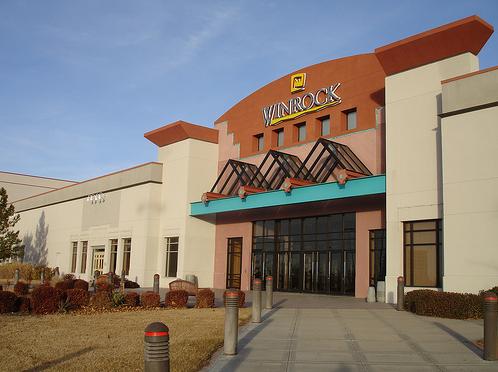 The establishment of Kirtland Air Force Base, Sandia Base, and
The establishment of Kirtland Air Force Base, Sandia Base, and 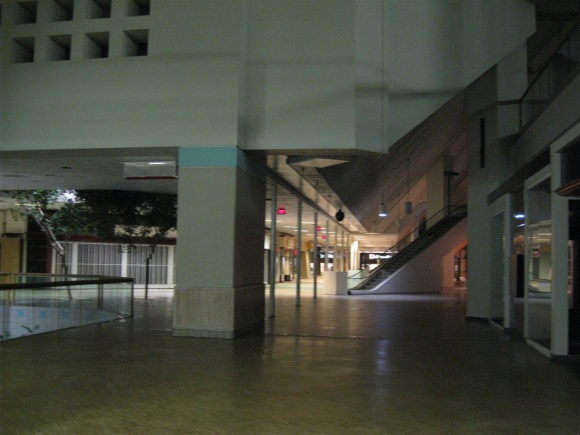 Not only was Winrock a shopping destination, but it was also a pioneer of mixed-use developments, housing a Best Western motel and offices on site, starting in 1963, with housing on its periphery. Also in 1963, the Fox Winrock Cinerama Theatre opened in the mall’s north parking lot.
Not only was Winrock a shopping destination, but it was also a pioneer of mixed-use developments, housing a Best Western motel and offices on site, starting in 1963, with housing on its periphery. Also in 1963, the Fox Winrock Cinerama Theatre opened in the mall’s north parking lot.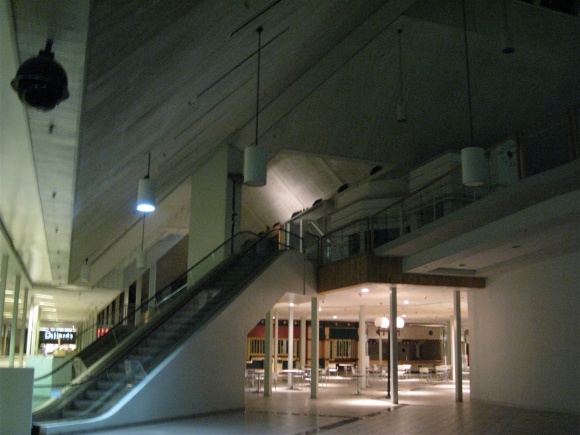 Throughout the 1980s and the beginning of the 1990s, Winrock and Coronado competed head-to-head, even in spite of a new 2-level showplace mall –
Throughout the 1980s and the beginning of the 1990s, Winrock and Coronado competed head-to-head, even in spite of a new 2-level showplace mall – 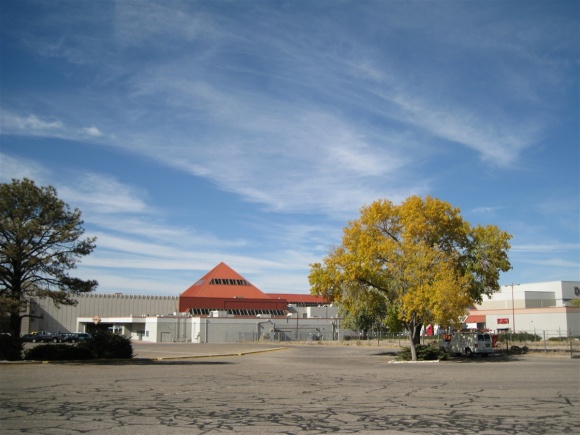 In 2002 following the Wards closure, and again in 2005, realizing the 874,000 square-foot mall was near the end of its useful life in its current state, owner PruWinrock LLC (owned by New Jersey-based Prudential) decided to remodel Winrock Center by returning it to an open-air mall, adding offices and apartments. In doing so, PruWinrock decided to let many of the remaining store leases expire without renewal, beginning in 2005, forcing the mall to become even more empty – but this time on purpose. The 174-room Best Western Winrock Inn also closed in 2005, after 42 years of business.
In 2002 following the Wards closure, and again in 2005, realizing the 874,000 square-foot mall was near the end of its useful life in its current state, owner PruWinrock LLC (owned by New Jersey-based Prudential) decided to remodel Winrock Center by returning it to an open-air mall, adding offices and apartments. In doing so, PruWinrock decided to let many of the remaining store leases expire without renewal, beginning in 2005, forcing the mall to become even more empty – but this time on purpose. The 174-room Best Western Winrock Inn also closed in 2005, after 42 years of business.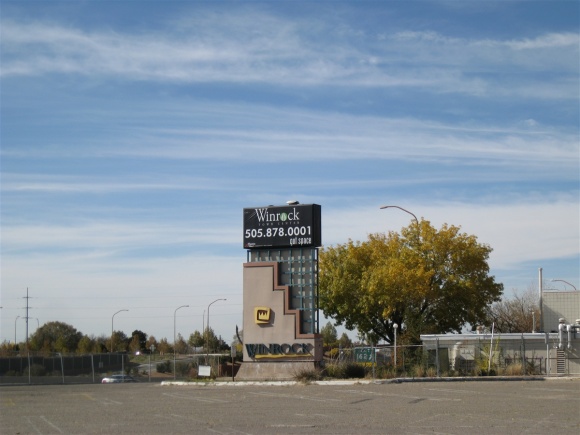 Their project is called
Their project is called 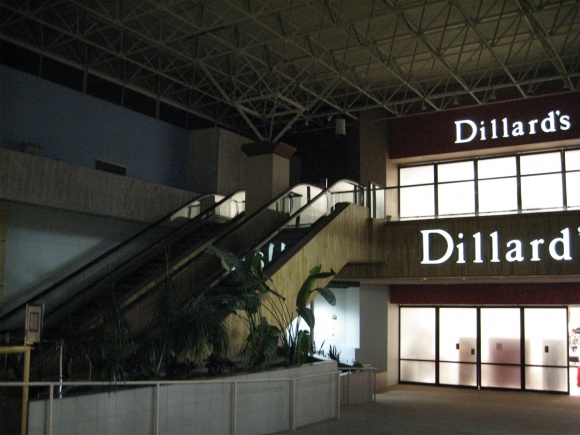 Wow! Sounds really exciting – if it could all come together, that is. The recent economic downturn wrecked the earlier, aforementioned sales records at ABQUptown and put a pall on the Winrock project, which – as of November 2009 – has yet to break ground. Goodman and Kelly have had a really tough time securing financing for the project, even with the help of local government. In December 2008, the Winrock redevelopment was given a $137 million TIDD – a Tax Increment Development District – which donates a portion of gross state tax receipts to help specific projects. Because the Winrock development is infill – and green-friendly – and will create over 5,000 jobs over the life of the project, it was deemed important enough to provide assistance.
Wow! Sounds really exciting – if it could all come together, that is. The recent economic downturn wrecked the earlier, aforementioned sales records at ABQUptown and put a pall on the Winrock project, which – as of November 2009 – has yet to break ground. Goodman and Kelly have had a really tough time securing financing for the project, even with the help of local government. In December 2008, the Winrock redevelopment was given a $137 million TIDD – a Tax Increment Development District – which donates a portion of gross state tax receipts to help specific projects. Because the Winrock development is infill – and green-friendly – and will create over 5,000 jobs over the life of the project, it was deemed important enough to provide assistance.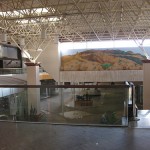
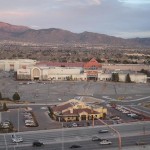
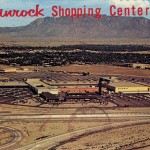
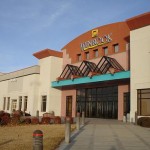
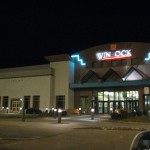
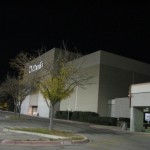
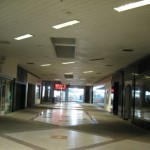
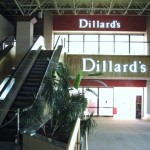
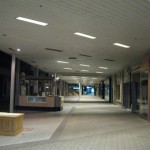
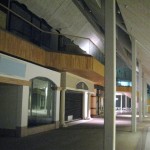
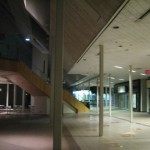
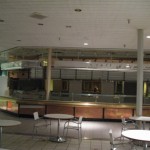
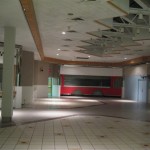
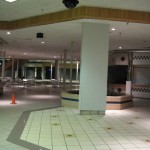
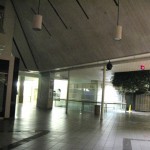
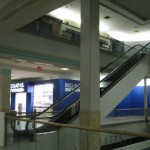
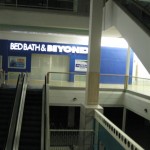
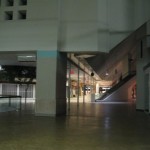
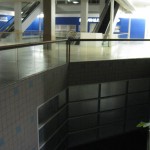
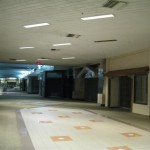
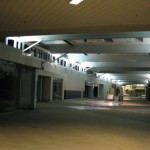
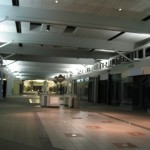
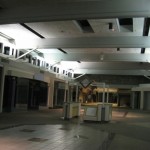
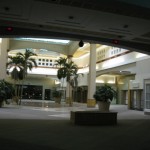
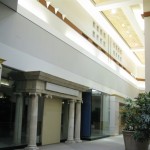
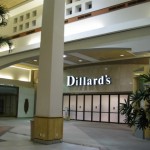
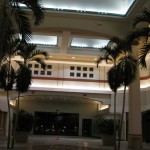
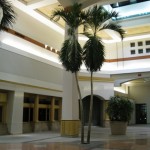
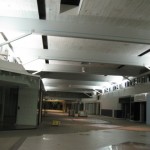
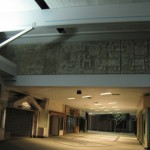
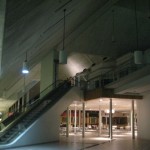
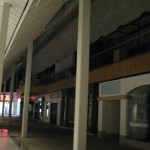
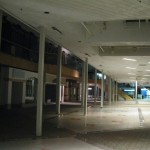
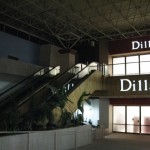
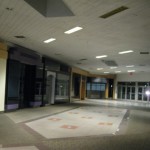
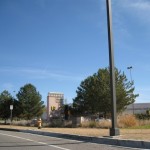
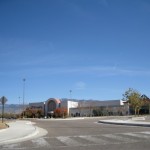
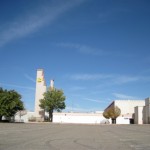
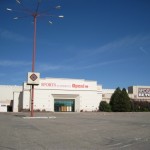
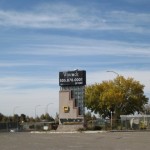
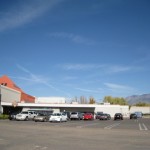
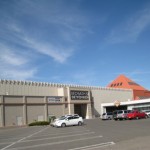
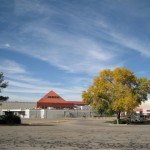
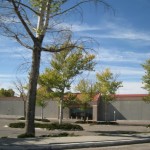
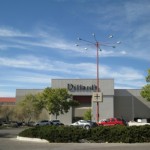
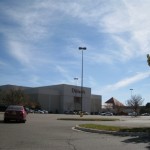
 Recently I’ve been following coverage of some pretty extensive renovations taking place at Lincoln Mall, a long-beleagured super-regional mall in south suburban Chicagoland. Initially I was excited at the prospect of even a modicum of success here, especially considering I’ve never seen the mall even close to its potential. I first visited Lincoln Mall about a decade ago, after it fell in the toilet but before it drowned. I recently re-visited for the first time after some of the renovations have materialized, and was extremely dismayed – both by the progress of the renovations and also by a personal, not-so-fun experience I had there.
Recently I’ve been following coverage of some pretty extensive renovations taking place at Lincoln Mall, a long-beleagured super-regional mall in south suburban Chicagoland. Initially I was excited at the prospect of even a modicum of success here, especially considering I’ve never seen the mall even close to its potential. I first visited Lincoln Mall about a decade ago, after it fell in the toilet but before it drowned. I recently re-visited for the first time after some of the renovations have materialized, and was extremely dismayed – both by the progress of the renovations and also by a personal, not-so-fun experience I had there.
 Lincoln Mall was an instant success, predating Orland Square by three years and the enclosure of River Oaks Mall by two decades. In fact, it wasn’t really until the late 1990s when things began to dramatically go south, despite the closure and 8 year vacancy of the Wieboldt’s store when that chain folded in 1987. In fact, the mall was refurbished with a major remodel and update in 1993, and Sears moved into Wieboldt’s old location from nearby
Lincoln Mall was an instant success, predating Orland Square by three years and the enclosure of River Oaks Mall by two decades. In fact, it wasn’t really until the late 1990s when things began to dramatically go south, despite the closure and 8 year vacancy of the Wieboldt’s store when that chain folded in 1987. In fact, the mall was refurbished with a major remodel and update in 1993, and Sears moved into Wieboldt’s old location from nearby  So, after completing due diligence, Realty America went to the Village of Matteson and apparently made a stellar presentation for redevelopment, because they were awarded $45 million for the project in April 2005. Groundbreaking took place in August of that year, with the construction of a new four-lane road behind the mall connecting Route 30 and Cicero. The theory behind this was that prospective new tenants wouldn’t want to be at the “back” of the mall with restrictive visibility and access. The new road essentially eliminates the idea of the “back” of the mall altogether, providing – in theory – the same level of access on all four sides of the mall.
So, after completing due diligence, Realty America went to the Village of Matteson and apparently made a stellar presentation for redevelopment, because they were awarded $45 million for the project in April 2005. Groundbreaking took place in August of that year, with the construction of a new four-lane road behind the mall connecting Route 30 and Cicero. The theory behind this was that prospective new tenants wouldn’t want to be at the “back” of the mall with restrictive visibility and access. The new road essentially eliminates the idea of the “back” of the mall altogether, providing – in theory – the same level of access on all four sides of the mall. In October 2008, the village of Matteson threw another $10 million at the project, to get the next phase running – the filling in of the demolished anchor pads, the exterior/interior renovations of the remaining enclosed mall, addition of other tenants, etc. About the same time, in September 2008, the Texas partnership of Realty America, who owns the mall, apparently stopped making mortgage payments on it, according to their lender, Texans Commercial. Not so, said the manager of the partnership, Rives Castleman (what a name); instead, he claims that the lender is forcing them into default by playing dirty tricks and instead owes them $20 million; they have filed counter suit. This is all from court documents, as both Castleman and his lawyer, Eugene Geekie (another name!) have refused to comment to reporters. Texans had agreed, in 2004 – when this entire project began – to finance the initial stages of the redevelopment, in addition to the $45 million received from the village at the get go. The loan had an outstanding balance of over $37 million at the time of the foreclosure.
In October 2008, the village of Matteson threw another $10 million at the project, to get the next phase running – the filling in of the demolished anchor pads, the exterior/interior renovations of the remaining enclosed mall, addition of other tenants, etc. About the same time, in September 2008, the Texas partnership of Realty America, who owns the mall, apparently stopped making mortgage payments on it, according to their lender, Texans Commercial. Not so, said the manager of the partnership, Rives Castleman (what a name); instead, he claims that the lender is forcing them into default by playing dirty tricks and instead owes them $20 million; they have filed counter suit. This is all from court documents, as both Castleman and his lawyer, Eugene Geekie (another name!) have refused to comment to reporters. Texans had agreed, in 2004 – when this entire project began – to finance the initial stages of the redevelopment, in addition to the $45 million received from the village at the get go. The loan had an outstanding balance of over $37 million at the time of the foreclosure. The interior portion of the mall today is kind of sad. There are some popular national retailers, like Old Navy, Bath and Body works and Express, but there are seemingly more vacancies and local stores.
The interior portion of the mall today is kind of sad. There are some popular national retailers, like Old Navy, Bath and Body works and Express, but there are seemingly more vacancies and local stores. 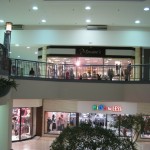
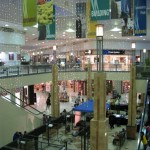
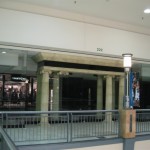
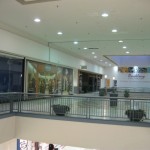
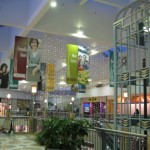
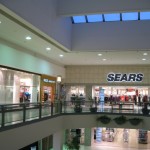
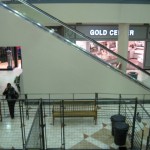
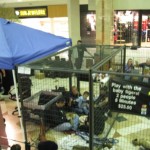
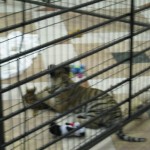
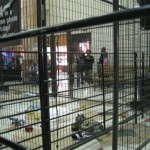
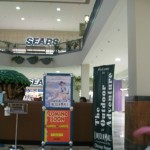
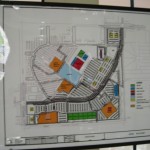
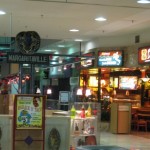
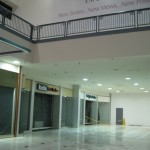
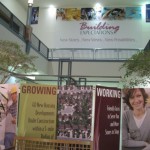
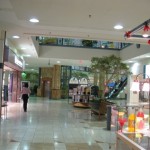
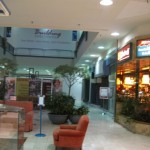
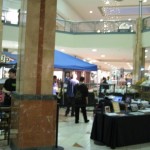
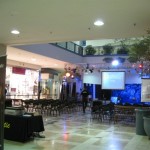
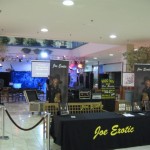
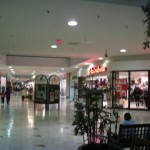
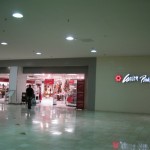
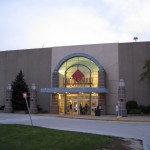
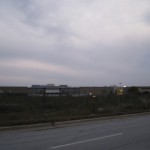
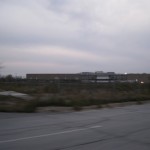
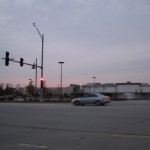
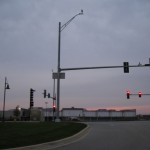
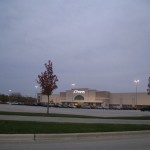
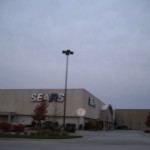
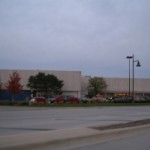
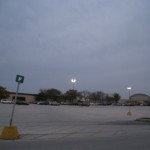
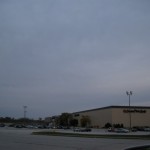
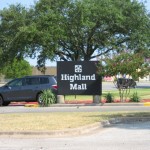
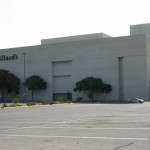
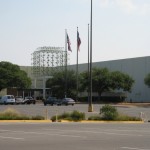
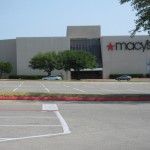
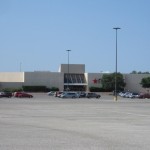
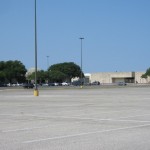
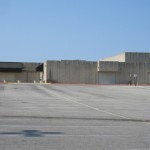
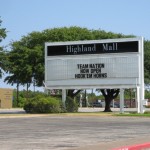
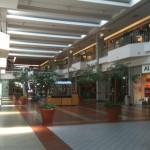
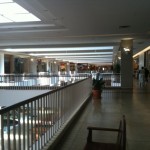
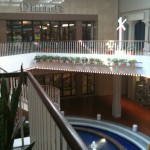
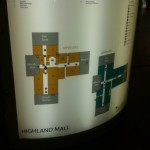
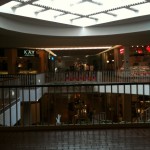
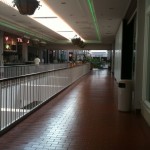
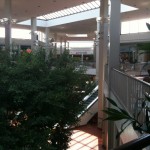
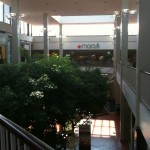
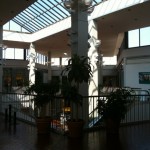
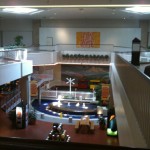
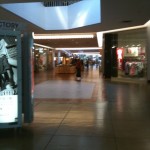
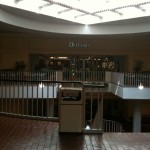
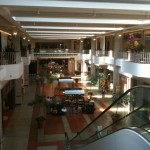
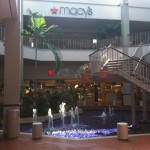
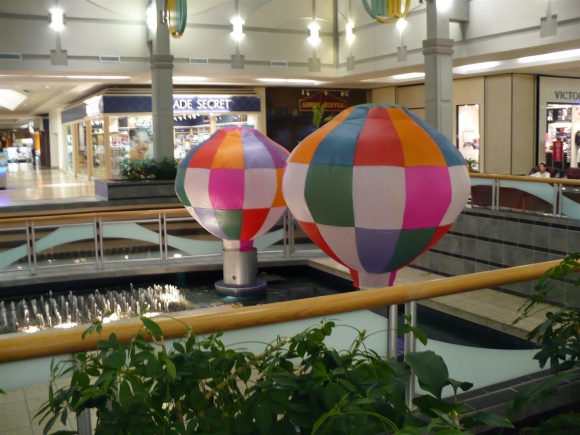
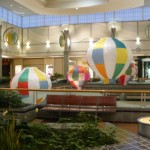
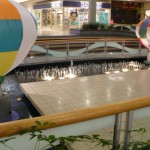
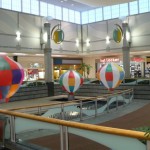
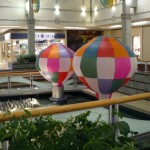
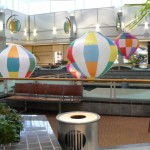
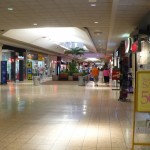
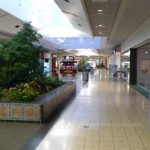
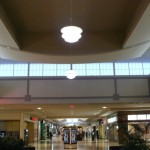
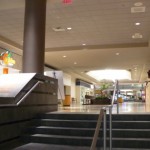
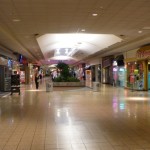
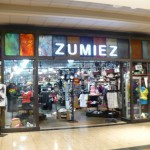
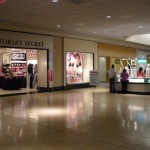
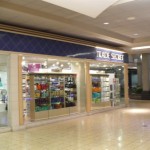
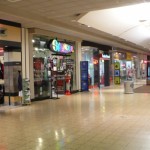
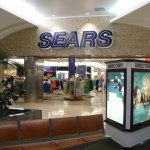
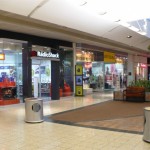
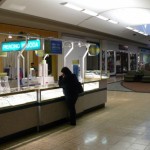
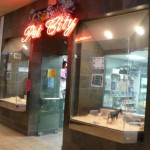
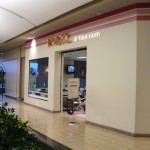
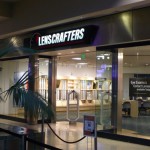
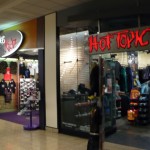
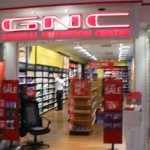
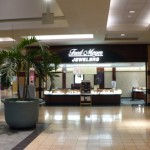
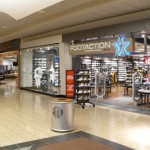
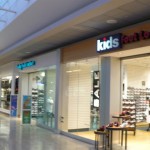
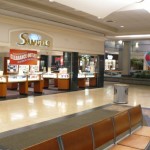
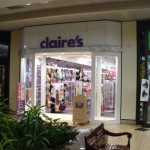
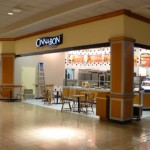
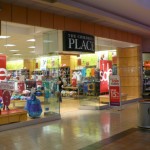
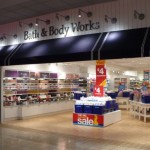
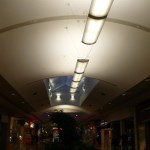
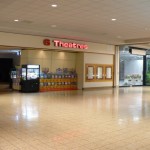
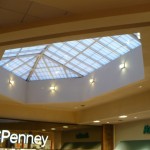
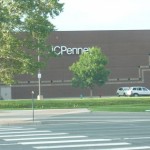
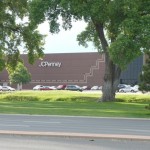
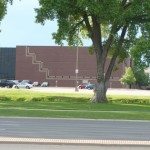
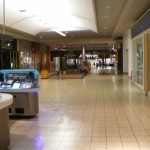
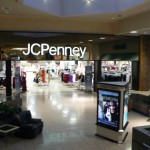
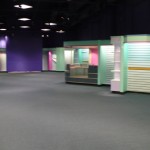
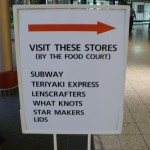
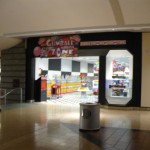
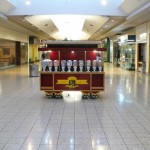
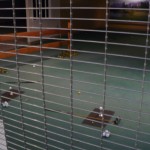
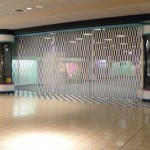
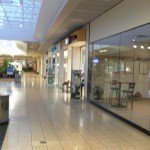
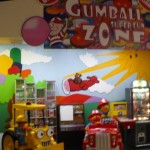
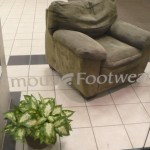
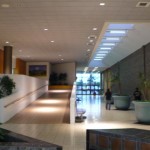
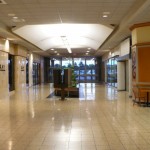
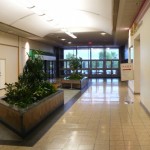
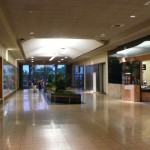
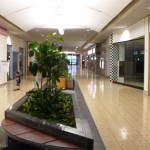
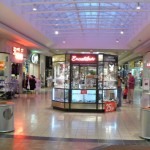
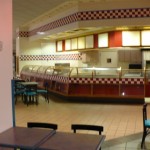

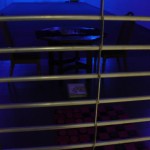
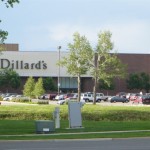
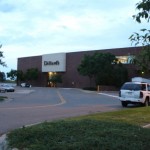
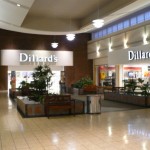
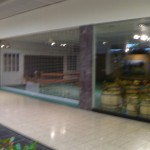
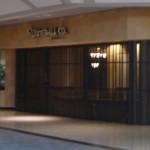
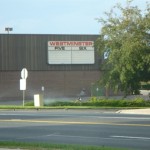
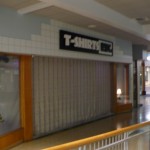
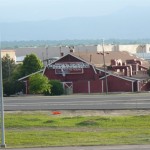
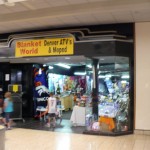
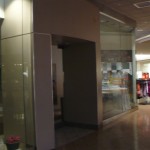
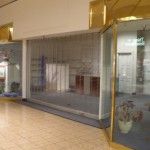
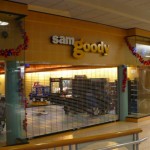
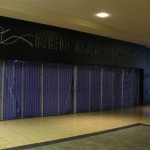
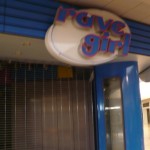
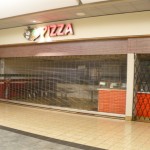
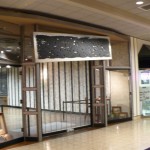
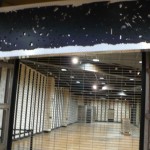
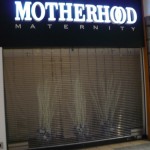
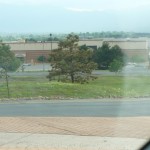
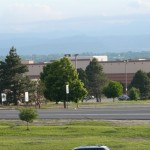
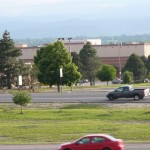
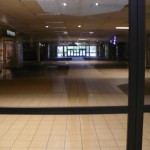
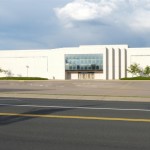
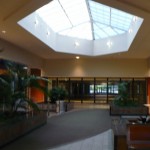
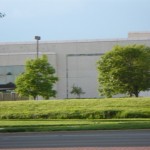
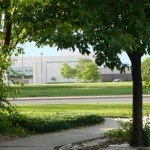
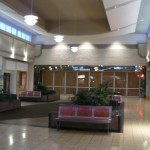
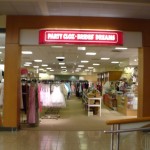
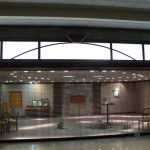
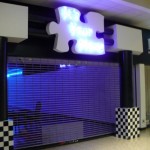
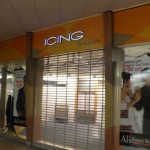
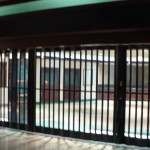
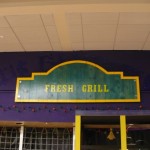
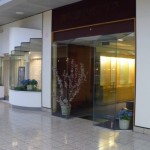
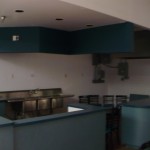
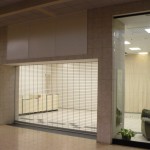
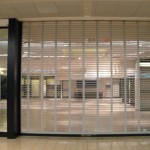
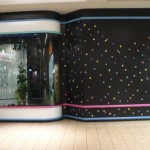
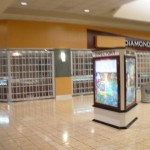
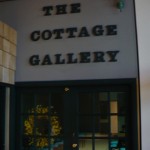
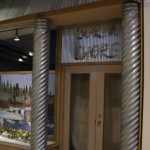
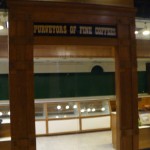
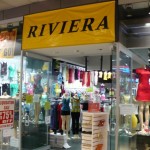
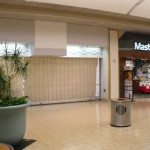
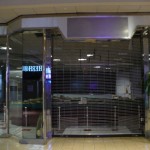
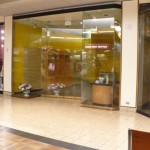
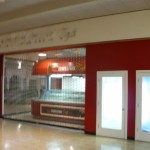
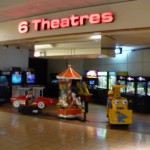
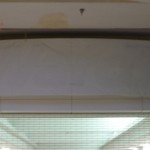
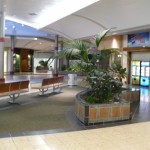
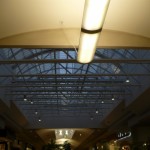
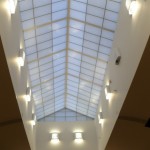
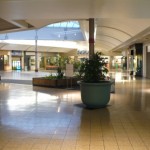
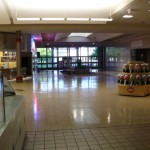
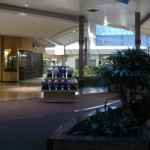
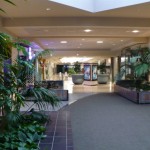

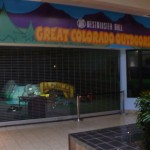
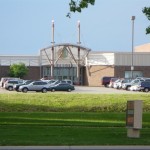
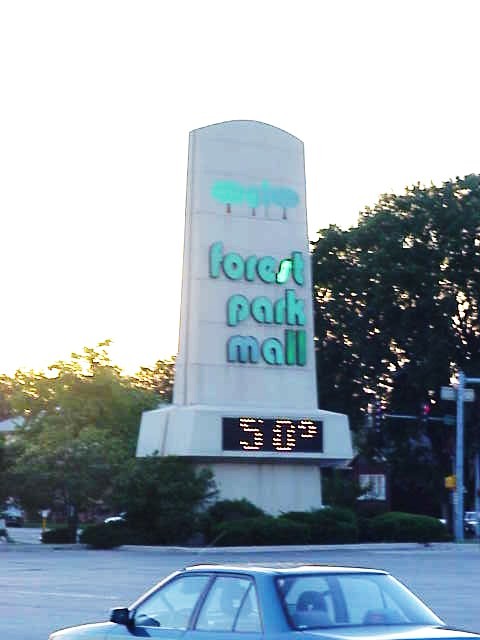 Forest Park Mall was a 400,000 square-foot enclosed mall located along Roosevelt Road just west of Harlem Avenue, and about a quarter of a mile south of I-290. Helmed by the same developer who created Ford City Mall on Chicago’s southwest side, Forest Park Mall – just like Ford City – was also a redevelopment project that converted an old factory into a shopping center – albeit on a smaller scale.
Forest Park Mall was a 400,000 square-foot enclosed mall located along Roosevelt Road just west of Harlem Avenue, and about a quarter of a mile south of I-290. Helmed by the same developer who created Ford City Mall on Chicago’s southwest side, Forest Park Mall – just like Ford City – was also a redevelopment project that converted an old factory into a shopping center – albeit on a smaller scale. 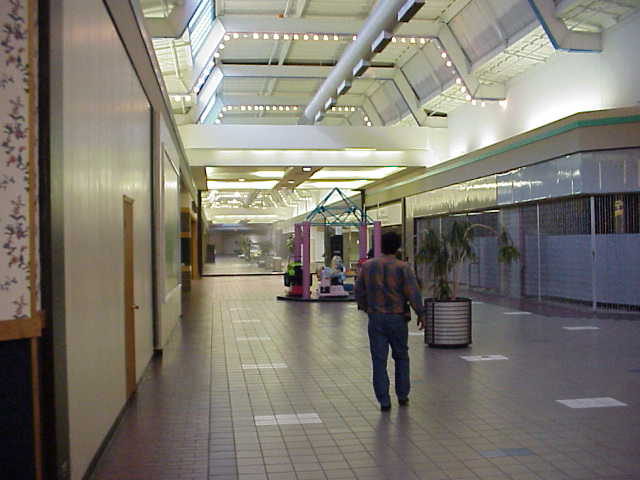 The retail scene in Forest Park itself, however, is kind of lacking. Downtown Oak Park has a myriad of options, including mall store chains like The Gap, but the nearest mall and a large concentration of box store options is located just a few blocks south of the city along Cermak Road and Harlem Avenue in the village of North Riverside. This corridor also contains a large, regional two-level mall, North Riverside Park Mall, which opened in 1976 and features Carson Pirie Scott, JCPenney, and Sears. It wasn’t until the early 1980s that a situation emerged giving Forest Park a chance to build a significant retail venture, the Forest Park Mall.
The retail scene in Forest Park itself, however, is kind of lacking. Downtown Oak Park has a myriad of options, including mall store chains like The Gap, but the nearest mall and a large concentration of box store options is located just a few blocks south of the city along Cermak Road and Harlem Avenue in the village of North Riverside. This corridor also contains a large, regional two-level mall, North Riverside Park Mall, which opened in 1976 and features Carson Pirie Scott, JCPenney, and Sears. It wasn’t until the early 1980s that a situation emerged giving Forest Park a chance to build a significant retail venture, the Forest Park Mall. 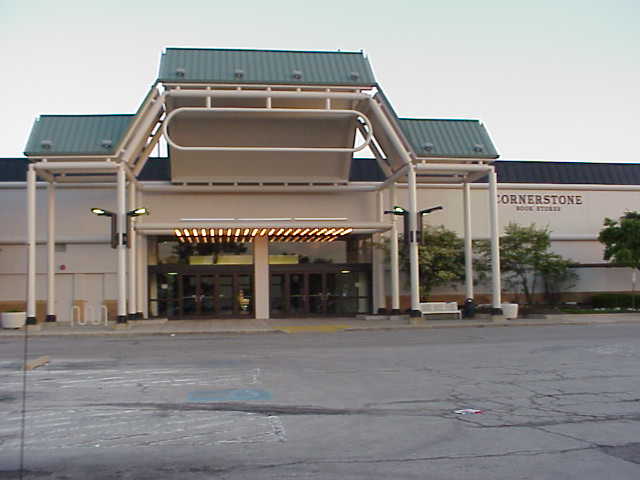 The city, who owned the site, then teamed up with the same developer who converted the Ford factory on Chicago’s southwest side into a successful regional mall in 1965. Because of the space constraints of the building and the 1976 opening of North Riverside Park Mall, a large, regional mall just one mile to the south, it was determined that the retail development in Forest Park would be smaller, at least to begin with.
The city, who owned the site, then teamed up with the same developer who converted the Ford factory on Chicago’s southwest side into a successful regional mall in 1965. Because of the space constraints of the building and the 1976 opening of North Riverside Park Mall, a large, regional mall just one mile to the south, it was determined that the retail development in Forest Park would be smaller, at least to begin with. Unfortunately, throughout the 1990s Forest Park Mall encountered many setbacks. First, Venture decided to remodel their store, and in doing so, shut their entrance to the mall. Whoops. Courtesy Home Center closed their eastern anchor store a couple years later, and left with only TJMaxx as an anchor the stores began to leave in droves. TJMaxx eventually closed also, leaving the mall somewhat anchorless, and the Forest Park library took up temporary residence in the mall’s lower level while a new facility was being built. Meanwhile, the large Child World castle closed in the early part of the decade and was demolished for a Portillo’s Hotdogs location.
Unfortunately, throughout the 1990s Forest Park Mall encountered many setbacks. First, Venture decided to remodel their store, and in doing so, shut their entrance to the mall. Whoops. Courtesy Home Center closed their eastern anchor store a couple years later, and left with only TJMaxx as an anchor the stores began to leave in droves. TJMaxx eventually closed also, leaving the mall somewhat anchorless, and the Forest Park library took up temporary residence in the mall’s lower level while a new facility was being built. Meanwhile, the large Child World castle closed in the early part of the decade and was demolished for a Portillo’s Hotdogs location.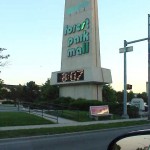
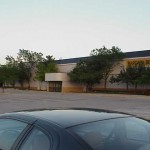
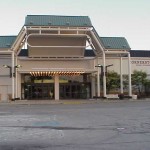
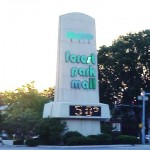
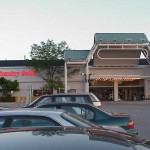
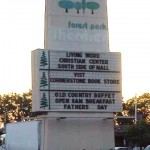
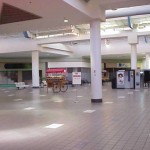
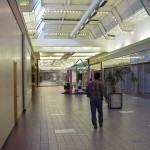
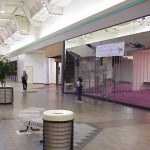
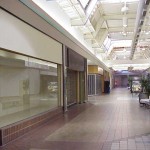
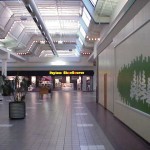
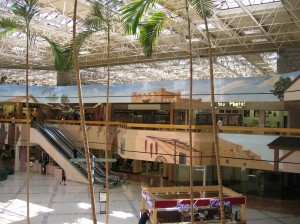 Located 10 miles southwest of downtown Dallas, at the interchange between US 67 and Interstate 20, Southwest Center Mall is both an anachronism and an eyesore. But what an amazing eyesore it is. One needs only to take a look at the photos to understand what a unique specimen this is, in terms of design, decor, and blatant inadequacy. But let’s dig a little deeper and try to figure out what happened.
Located 10 miles southwest of downtown Dallas, at the interchange between US 67 and Interstate 20, Southwest Center Mall is both an anachronism and an eyesore. But what an amazing eyesore it is. One needs only to take a look at the photos to understand what a unique specimen this is, in terms of design, decor, and blatant inadequacy. But let’s dig a little deeper and try to figure out what happened.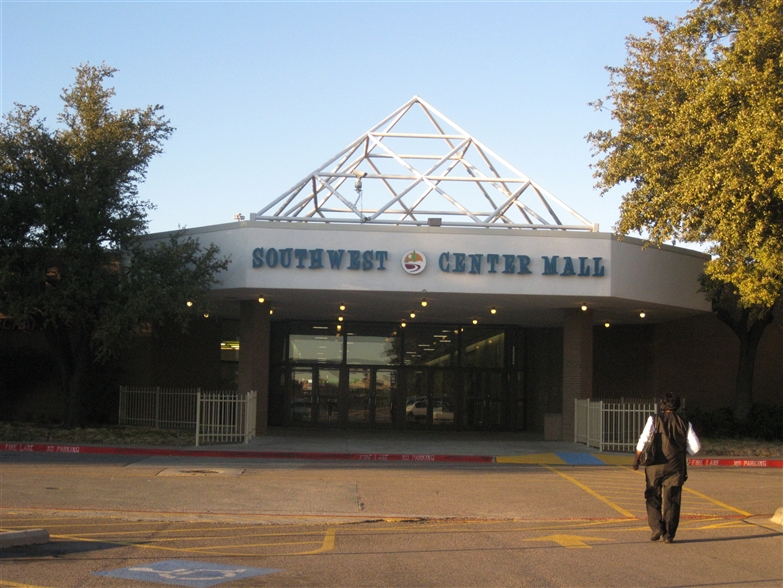
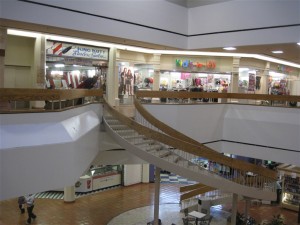 In an attempt to disassociate the mall from its troubled environs and checkered recent past, NAAMCO gave the mall a small refurbishment and a new name – Southwest Center Mall – in 1997. A new food court, begun under the reign of DeBartolo, was finished and occupied in 1998 at the mall’s northwest entrance. With a price tag of $18 million, the food court took up the lion’s share of updates to the mall upon its change of hands and change of name. In addition, though, Dillard’s increased their store size from 100,000 to 150,000 square feet, and Sears renovated their entire store in 1998.
In an attempt to disassociate the mall from its troubled environs and checkered recent past, NAAMCO gave the mall a small refurbishment and a new name – Southwest Center Mall – in 1997. A new food court, begun under the reign of DeBartolo, was finished and occupied in 1998 at the mall’s northwest entrance. With a price tag of $18 million, the food court took up the lion’s share of updates to the mall upon its change of hands and change of name. In addition, though, Dillard’s increased their store size from 100,000 to 150,000 square feet, and Sears renovated their entire store in 1998. 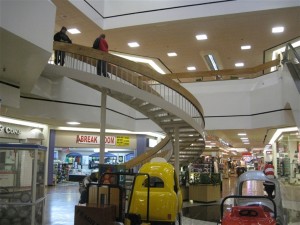 Perhaps another factor in Southwest Center Mall’s troubles is the lack of commitment from ownership. In the past eight years, the mall has had four owners, and its value on the tax rolls has decreased from $22 million in 2000 to just $6.25 million in 2008. In 2008, Southwest Center’s then-owner Thomas E. Morris – owner of other faily malls like Six Flags Mall in Arlington – declared bankruptcy, and in January 2009 the mall almost closed because the electricity was going to be shut off due to nonpayment. Whoops. An eleventh-hour save by a new owner – Madison Capital – who paid the bills, collected outstanding rent from some of the tenants, and even hired a professional security company. It’s no wonder the mall’s been in peril with such terrible past management problems, but Madison Capital is looking to sell the mall again to a more responsible owner. We’ll keep our fingers crossed.
Perhaps another factor in Southwest Center Mall’s troubles is the lack of commitment from ownership. In the past eight years, the mall has had four owners, and its value on the tax rolls has decreased from $22 million in 2000 to just $6.25 million in 2008. In 2008, Southwest Center’s then-owner Thomas E. Morris – owner of other faily malls like Six Flags Mall in Arlington – declared bankruptcy, and in January 2009 the mall almost closed because the electricity was going to be shut off due to nonpayment. Whoops. An eleventh-hour save by a new owner – Madison Capital – who paid the bills, collected outstanding rent from some of the tenants, and even hired a professional security company. It’s no wonder the mall’s been in peril with such terrible past management problems, but Madison Capital is looking to sell the mall again to a more responsible owner. We’ll keep our fingers crossed.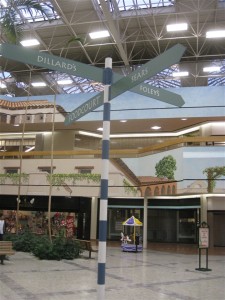 Despite all of these problem, however, there remains a niche of stores which are making it at Southwest Center Mall. Most of these stores cater exclusively to an African-American clientele, and
Despite all of these problem, however, there remains a niche of stores which are making it at Southwest Center Mall. Most of these stores cater exclusively to an African-American clientele, and 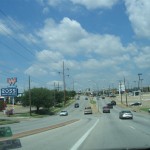
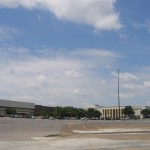
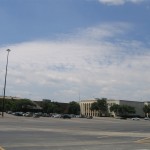
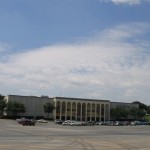
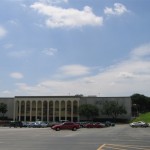
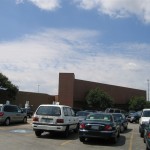
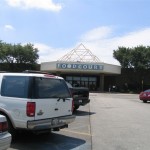
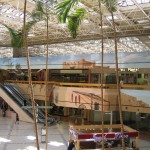
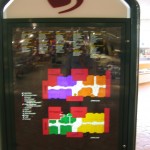
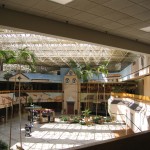
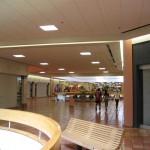
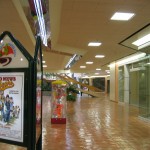
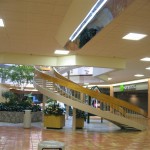
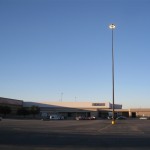
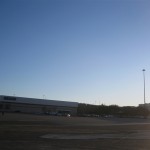
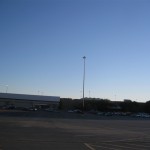
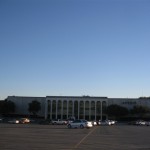
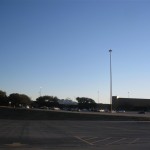
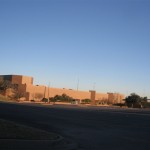
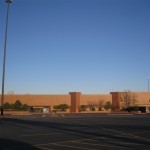
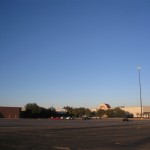
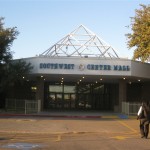
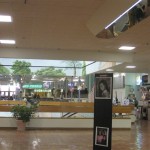
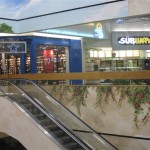
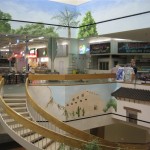
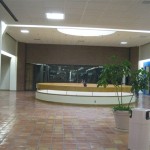
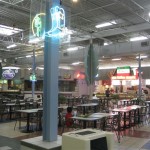
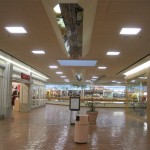
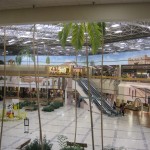
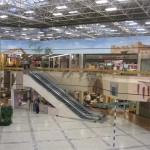
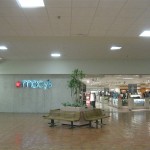
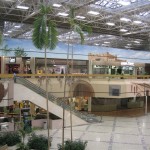
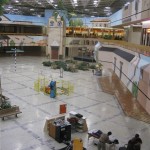
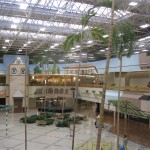
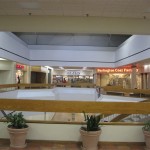
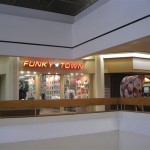
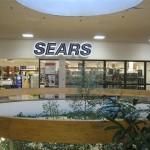
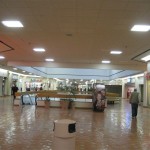
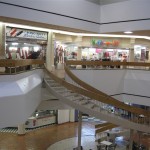
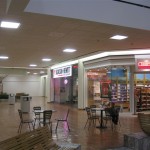
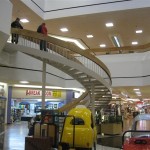
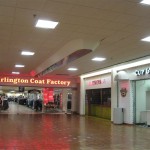
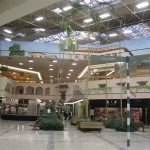
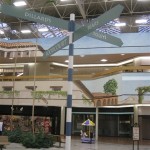
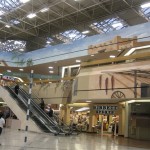
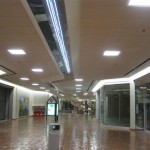
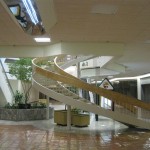
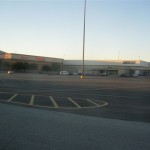
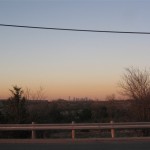
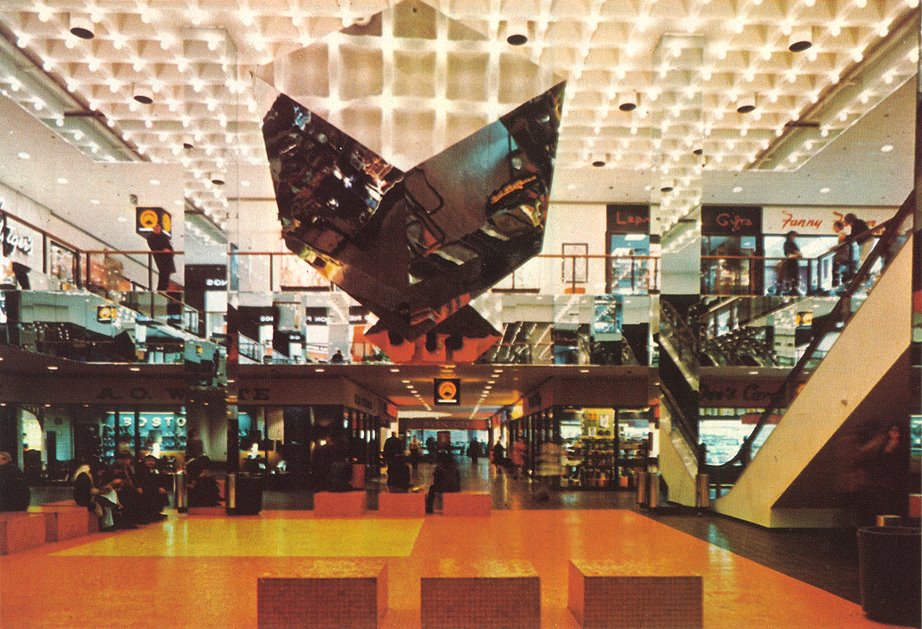 Tower Square–which was born as the Baystate West Mall–is a prime example of a common attempt 1970s at reviving an urban downtown. The mall linked the city’s two flagship department stores–Steiger’s and Forbes & Wallace–along with a 30 story Marriott hotel while adding two levels of shopping.
Tower Square–which was born as the Baystate West Mall–is a prime example of a common attempt 1970s at reviving an urban downtown. The mall linked the city’s two flagship department stores–Steiger’s and Forbes & Wallace–along with a 30 story Marriott hotel while adding two levels of shopping.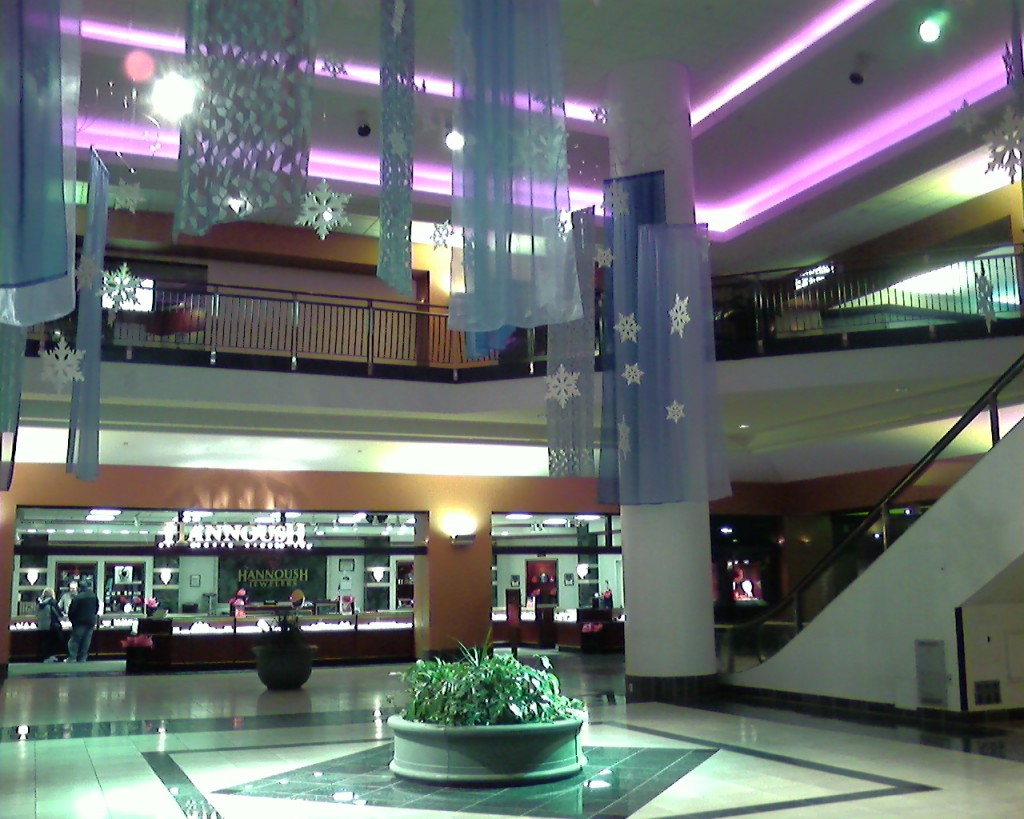
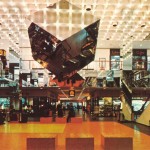
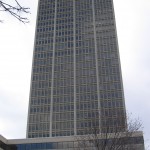
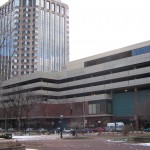
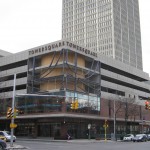
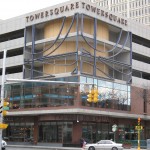
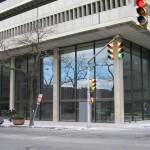
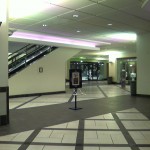
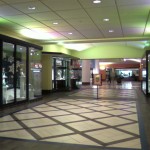
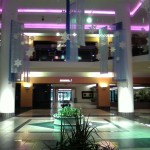
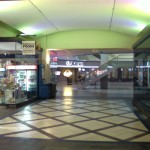
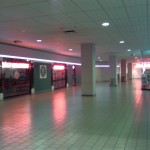
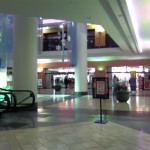
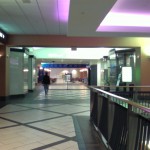
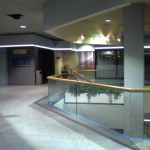
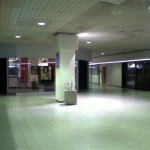
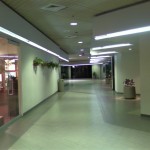
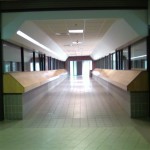
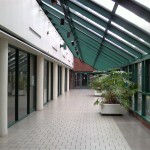
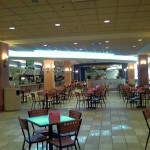
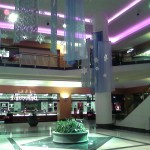
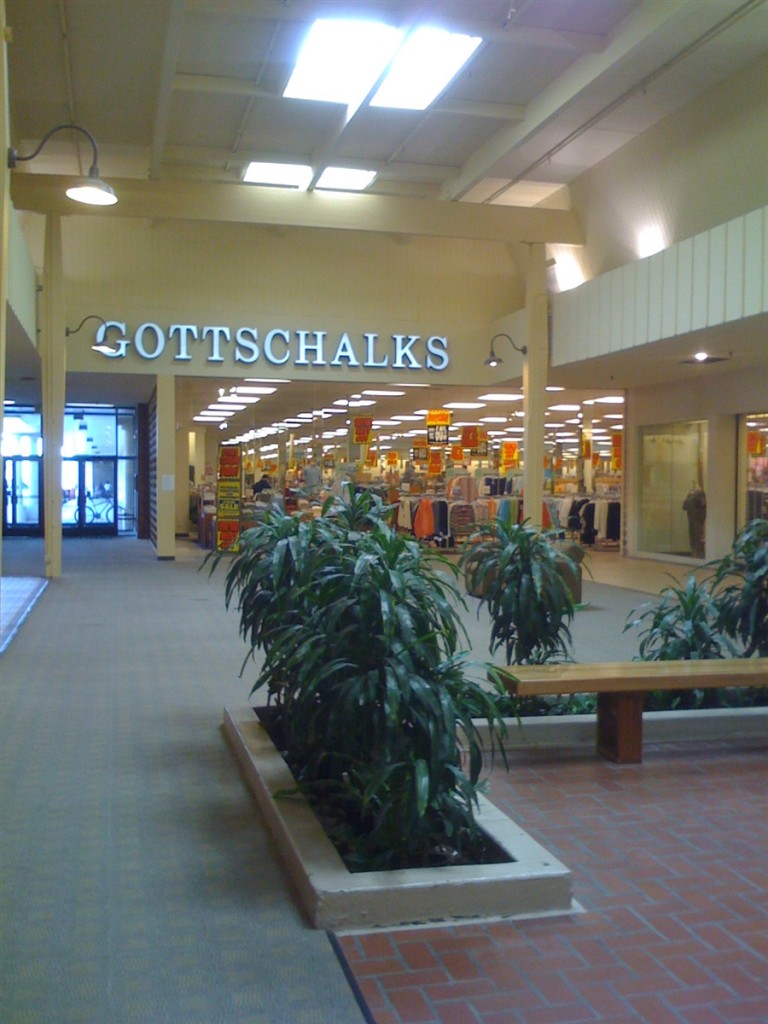 Carson Mall is the only enclosed mall serving Carson County, Nevada, home of Carson City, the state capital. Anchored by a soon-to-be-dark Gottschalks and Boot Barn, this tiny mall was almost completely deserted on the Sunday afternoon I visited. I mean, literally, creepily deserted–see these photos? Notice that there’s no one else in most of them? Yeah, I was in there all by myself. There were a *few* other people; an older woman with a Florence Henderson haircut windexing the slot machines in a tiny slot parlor in the middle of the mall, a few oversized men pumping quarters into said machines, and one lone elderly gentleman limping down the center of the mall.
Carson Mall is the only enclosed mall serving Carson County, Nevada, home of Carson City, the state capital. Anchored by a soon-to-be-dark Gottschalks and Boot Barn, this tiny mall was almost completely deserted on the Sunday afternoon I visited. I mean, literally, creepily deserted–see these photos? Notice that there’s no one else in most of them? Yeah, I was in there all by myself. There were a *few* other people; an older woman with a Florence Henderson haircut windexing the slot machines in a tiny slot parlor in the middle of the mall, a few oversized men pumping quarters into said machines, and one lone elderly gentleman limping down the center of the mall.